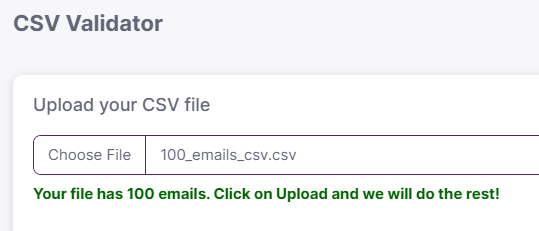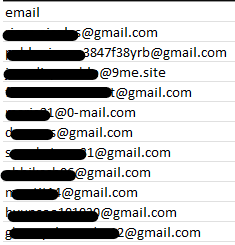BULK EMAIL VALIDATION
TL;DR:
Bulk email validation involves verifying multiple email addresses in an automated manner. It checks for syntax issues, looks for valid MX records for domains, and detects temporary email addresses. This practice is useful for cleaning email lists, eliminating invalid addresses, and ensuring emails reach valid recipients when using email marketing services.
What is bulk email validation?
Bulk email verification differs from standard email validation or verification procedures in that human intervention is usually not required. If users want to input email addresses in bulk, you probably won't need a frontend unless you're building your own bulk email validator.
Typically, to verify email addresses in bulk, a CSV upload or a script that checks all email addresses in a database is used.
The bulk email verifier checks each address by running it through a validator that looks for the following once you submit your CSV or another file:
- Syntax issues in the email addresses.
- The presence of MX records for those addresses.
- Delivery capability of the email addresses.
- Whether those addresses are temporary.
Let's quickly examine each of these validations in more detail:
Syntax issues in email addresses
This is an easy-to-follow process. It involves checking if any email address has an incorrect format (i.e., if it contains strange characters or non-existent domains, etc.). Typically, email addresses are checked against rules like the RFC 2822 Standard defined by the IEFT. A fairly complicated Regular Expression can be used to perform this step.
Verification of MX records for domains
In this stage, the DNS records for the domain of an email are looked up. To ensure deliverability, specific DNS records need to be in place for a domain before it can be used to send email addresses.
A domain typically needs an SPF record in addition to a domain's MX record. Email addresses from this domain are considered invalid if the domain is determined to be invalid or if any entry is missing.
Detection of temporary email addresses
People use temporary email addresses (DEAs), which are short-lived email addresses, to avoid filling out registration and login forms without revealing their actual email addresses. Obviously, these "throwaway" email addresses should be removed from our email address list, as we don't want them there.
When is it appropriate to verify emails in bulk?
It is crucial to perform routine list cleaning if you manage an email list, newsletter, lead generation database, or other email address collection. You don't want to pay to send emails to invalid email addresses if you are using services to send email marketing campaigns.
Cleaning your list every four months or more is a good cycle for bulk email verification. By doing this, any invalid, spam, or undeliverable addresses should be removed from your email list. At the same time, you should try to re-engage or unsubscribe inactive subscribers, those who receive your emails but never click on anything or open them.
Bulk Email Validation with Valid Email
Let's take a brief look at how Valid Email, a free email verifier, handles the process of bulk email validation.
To validate emails, you must have an associated API. You can go to the Valid Email homepage and select "Try it free" by clicking the purple button. This will allow you to perform up to 10 email validations. Now, to perform bulk validations, if you've never used Valid Email before, you'll be asked to create an account using your email address and a password. If you've used the service before, you may need to log in.
Once logged in, you'll access the dashboard, where you'll see various tools you can use on the left side, as well as your unique API key.

You'll find the "CSV Validator" option in the list of tools. To access the bulk email upload page, click there.

Next, click on the "Choose File" button to select the CSV file containing the email addresses, or drag and drop it from your file explorer, and click "Upload."


You'll see an upload indicator while the upload is processing, and depending on the file size and your internet connection speed, it may take more or less time.


When the file is ready, click the download button. The file can be opened in any spreadsheet program, including Excel or Google Sheets.

The CSV file will show data indicating whether the address has the correct format, is deliverable, free, or disposable.
From here, you can remove invalid email addresses from the bulk email list using the filtering options in your spreadsheet program. If the list is very large, you can also develop a script that goes through all the values and removes invalid email addresses.
Conclusion
Bulk email validation is essential to maintain clean email lists and ensure the effectiveness of email marketing campaigns. This automated process verifies email syntax, delivery capability, and the validity of email addresses, as well as detects temporary or disposable email addresses. By regularly performing this verification, email bounce rates are reduced, improving deliverability, saving costs, and enhancing communication quality with subscribers.